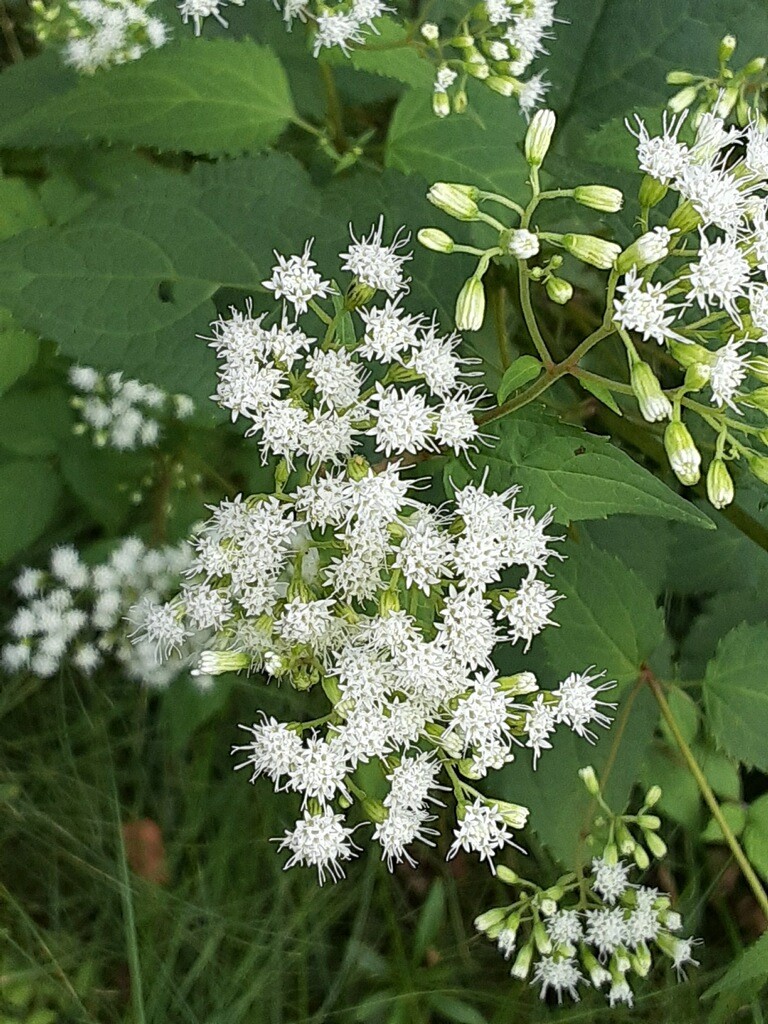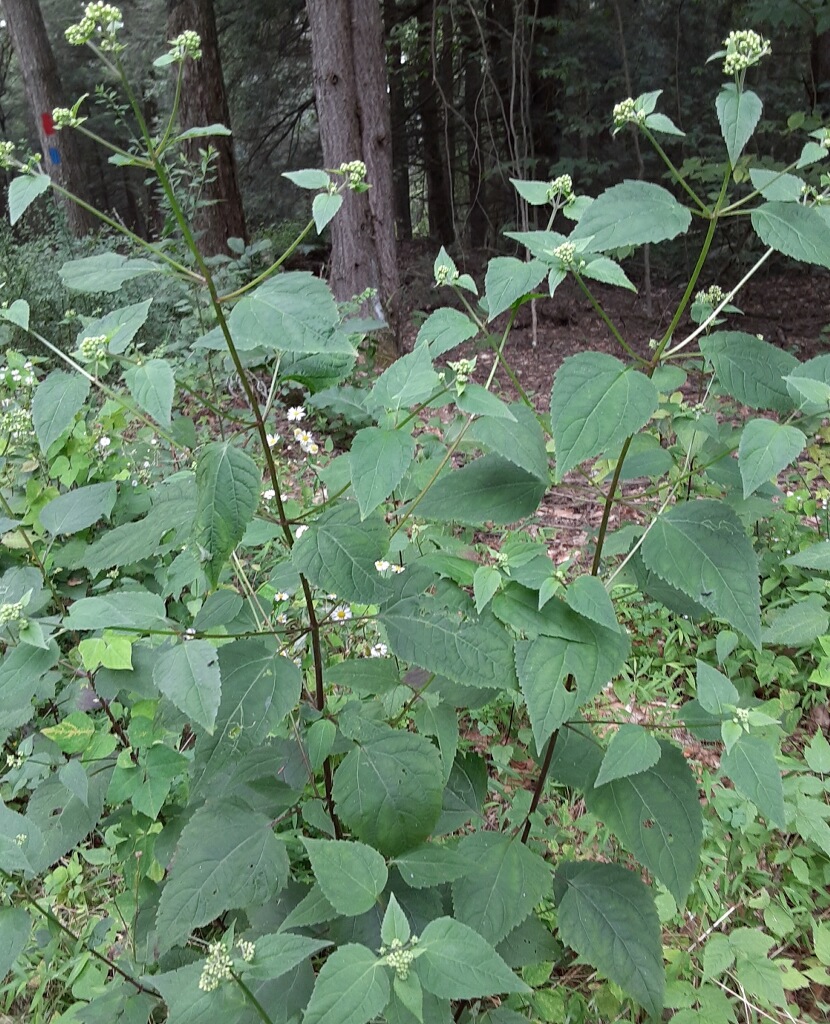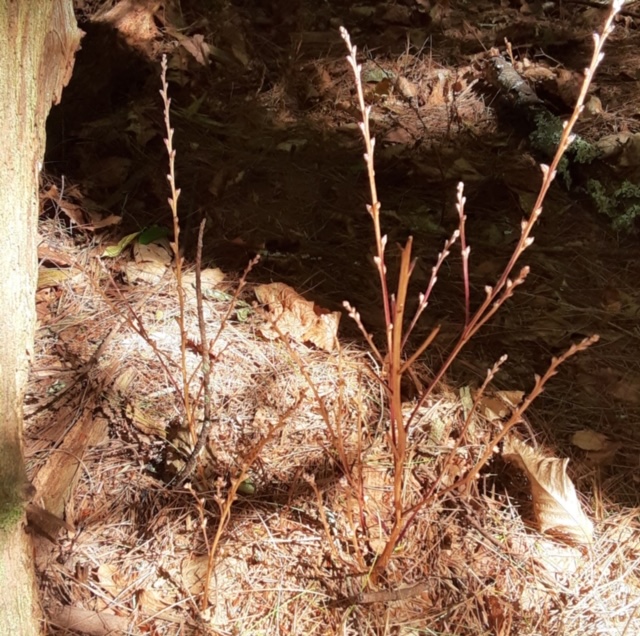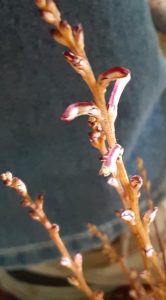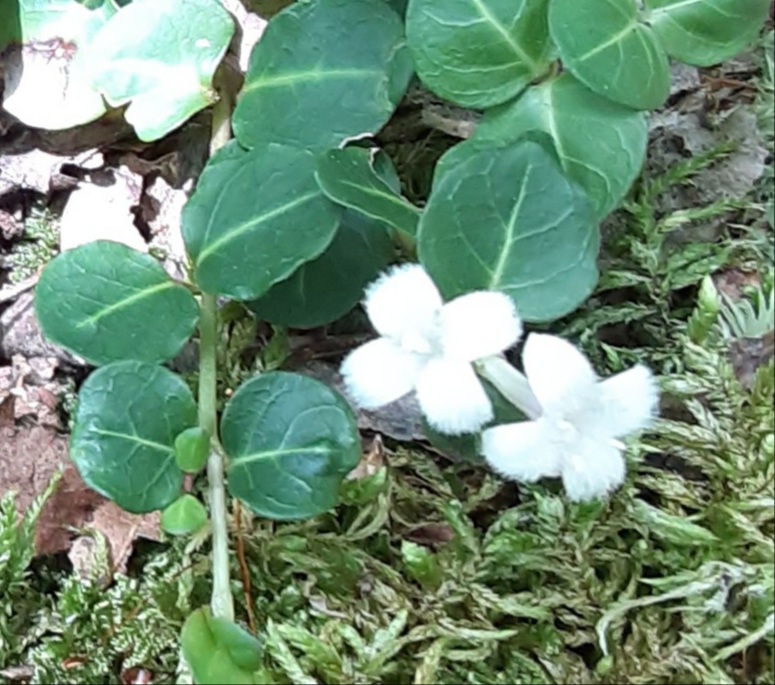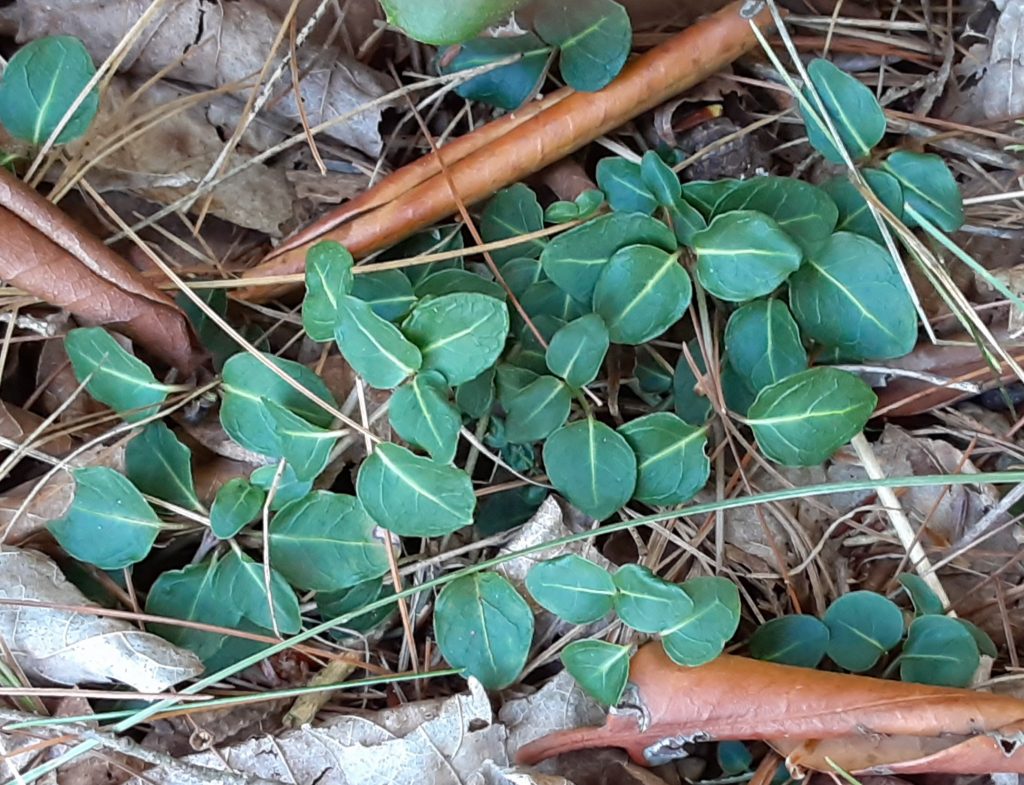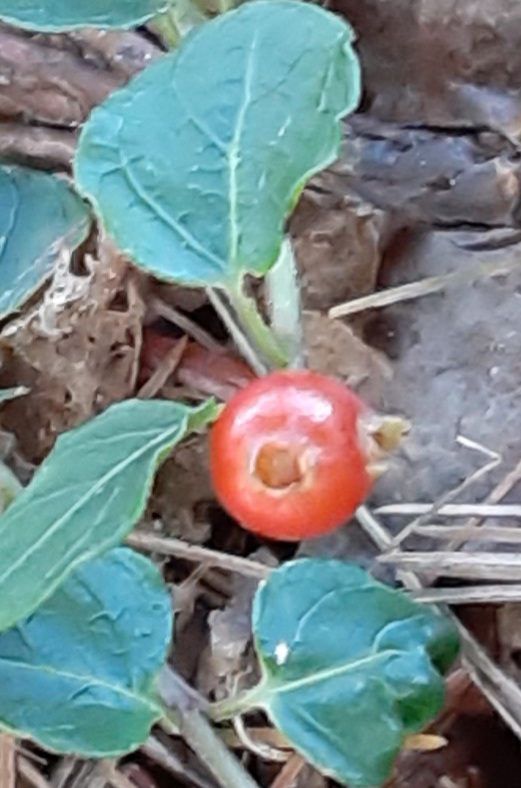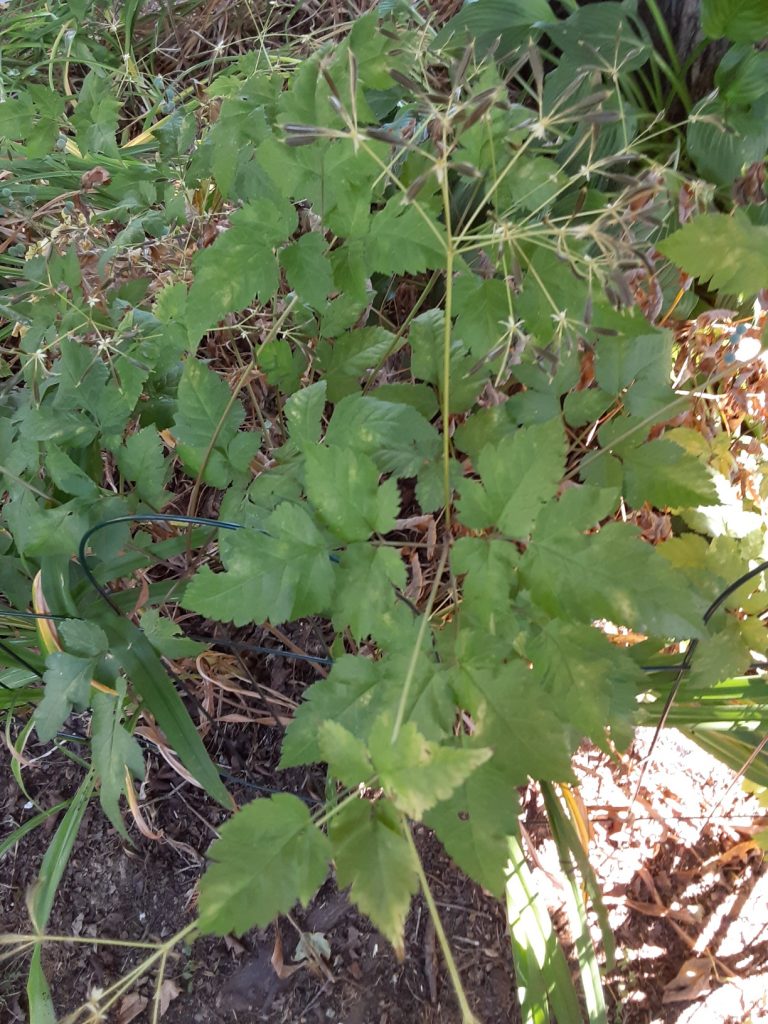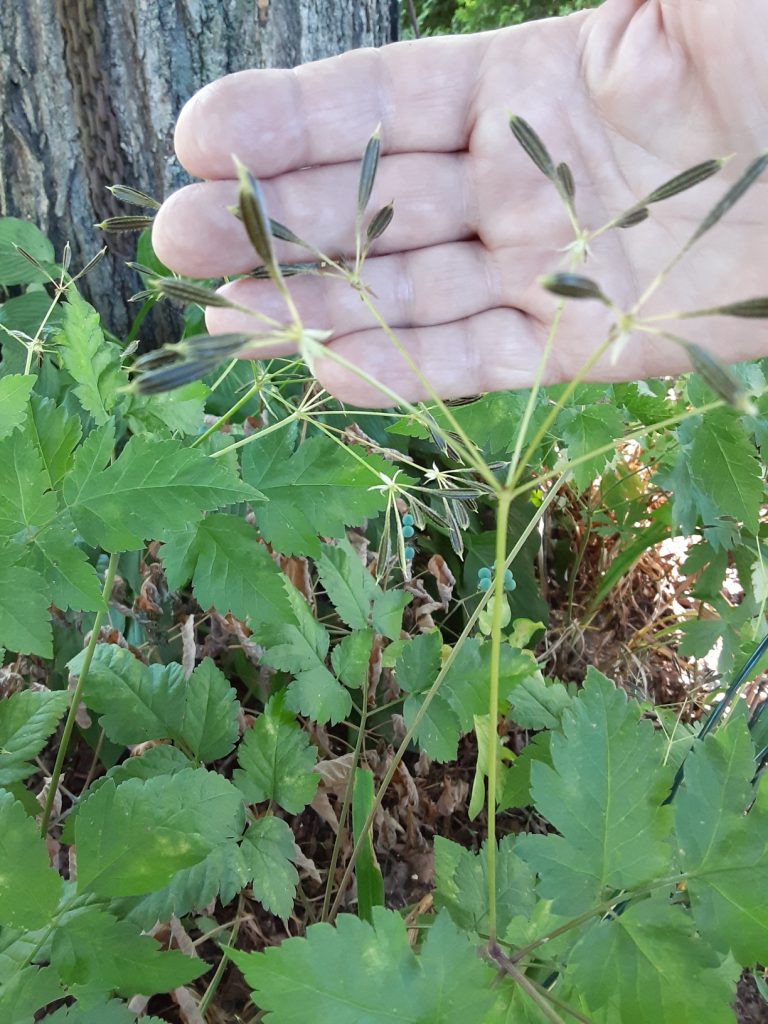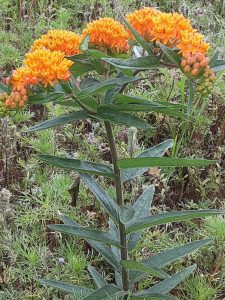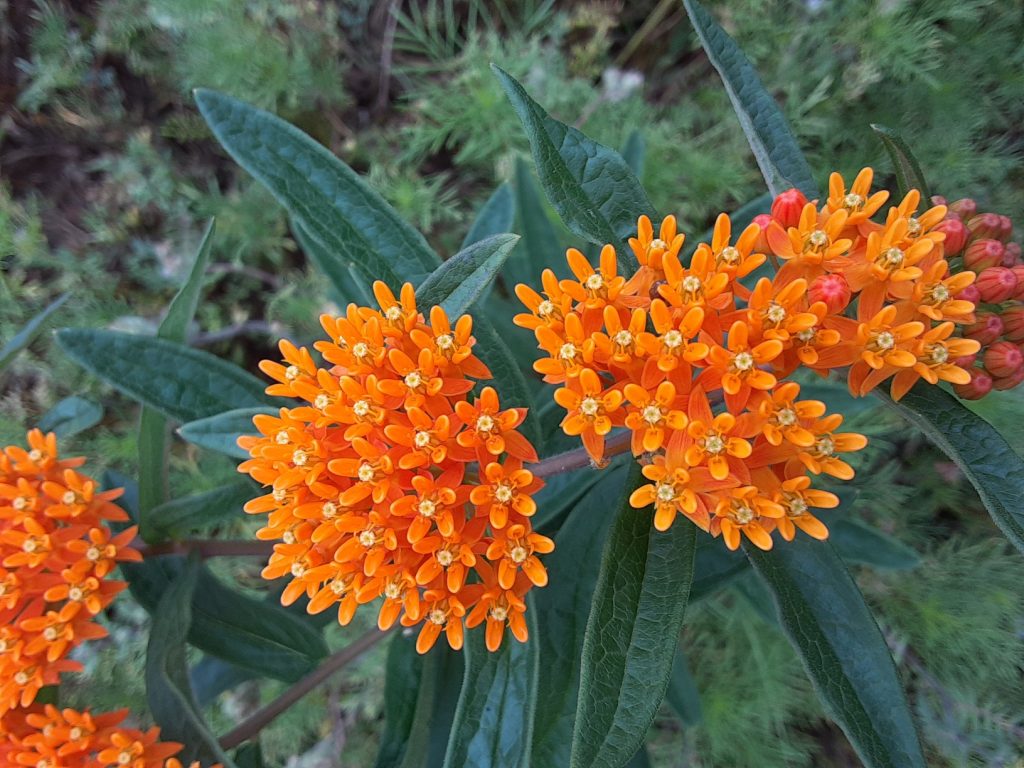By Susan Sprout
When I find Nodding Ladies’ Tresses, it makes me want to twist and shout! In thanks for the plant being there, growing – AND – in honor of a very special movement each little white flower on the stem has to make in order to bloom.
The labellum or lip which is attached above, actually twists down and around so that it is now below the other petals as it opens! This action provides a landing place for visiting insects and may also allow the lip to get more sunlight, showing patterns and nectar guides better.
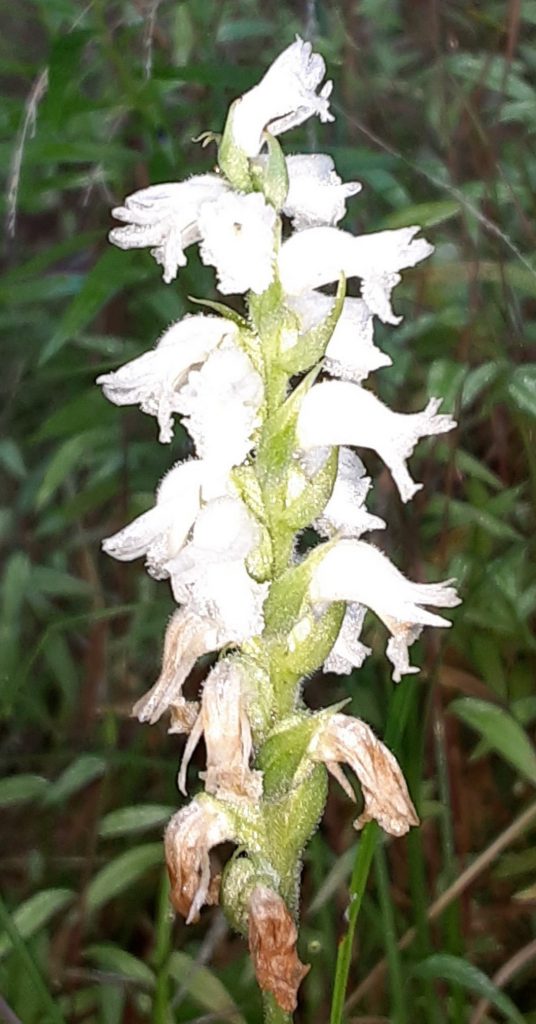
Orchid flowers that do the twist are called “resupinate”. Yes, this plant is an orchid, native to Eastern North America. While it is not an uncommon plant, it is picky about where it lives and with whom. I found these in partial shade, along a dirt road where the soil was wet and acidic.
Nodding Ladies’ Tresses will spread slowly by underground rhizomes to form colonies. They can reproduce by seed, too, but their seeds lack the store of starch and nutrients necessary for successful germination. Therefore, they require the help of mycorrhizal fungi to provide fixed carbon and mineral nutrients for the growth of seedlings…a specific species of fungus. Picky!
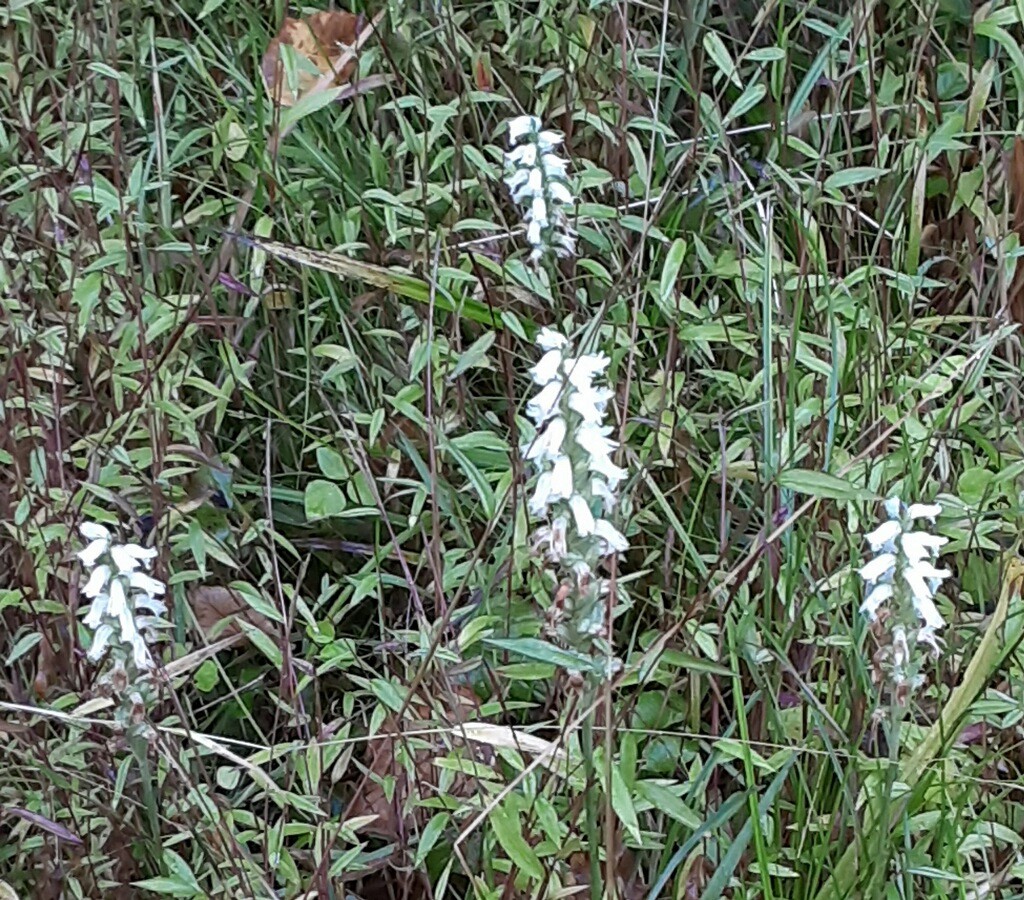
Look for them. They will keep blooming until the first frost. The single stem, about sixteen inches tall, holds a six-inch flower spike with a coiled spiral of white or ivory flowers, each one being held by a bulbous bract that is green and covered with minute hairs that spread about halfway down the stem. You may find two or three really thin leaves tightly clasping the lower stem. A basal rosette of leaves will be gone by the time the plant blooms. The tongue-shaped lower lips of the flowers are thin and lacy.
At least ten species in the genus Spiranthes can be found in Pennsylvania in various forms and locations.
When you find some, twist and shout!


